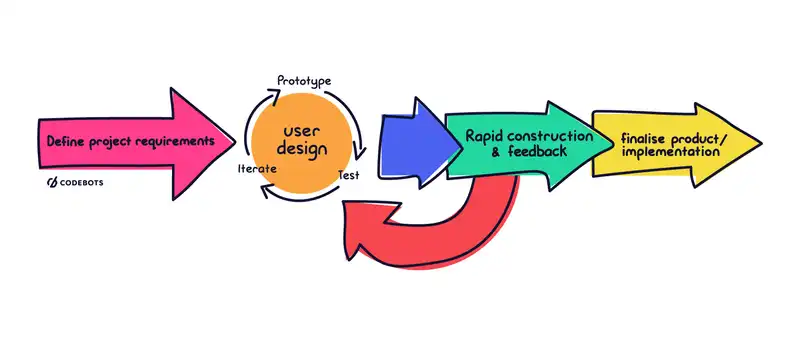Rapid Application Development: Accelerating Software Delivery

Rapid Application Development (RAD) is a modern software development methodology that emphasizes speed, flexibility, and collaboration to create applications more efficiently. Unlike traditional approaches that rely on lengthy planning and rigid structures, RAD focuses on quick iterations, prototyping, and continuous feedback from users. This enables organizations to develop functional solutions in shorter timeframes while ensuring that the end product closely aligns with business requirements.
At its core, RAD prioritizes adaptability and responsiveness to change. In today’s fast-paced digital environment, businesses cannot afford to spend months or years on application development without the assurance that the final product will still meet market demands. RAD addresses this challenge by breaking down the development cycle into smaller, manageable phases, where developers and end-users work together. Prototypes and working models are produced quickly, tested, and refined based on user feedback. This collaborative approach minimizes the risk of failure and ensures higher user satisfaction.
One of the key benefits of Rapid Application Development is its ability to shorten time-to-market. By using iterative cycles and reusing existing components, teams can rapidly deliver applications without compromising quality. This is particularly valuable for organizations in industries like finance, healthcare, retail, and technology, where customer needs and regulatory requirements change frequently. With RAD, businesses can release solutions faster, respond to competitor moves, and remain agile in dynamic markets.
RAD also enhances communication and transparency among stakeholders. Instead of relying solely on documentation and upfront planning, developers work closely with users throughout the project. Regular feedback sessions and demonstrations ensure that everyone involved has a clear understanding of progress, challenges, and changes. This reduces misunderstandings and helps build trust between teams, ultimately leading to a better final product.
Another advantage of Rapid Application Development is cost efficiency. While initial investment in tools and skilled developers may be higher, RAD significantly reduces the costs associated with rework and project delays. By identifying potential issues early through prototypes and user input, organizations can avoid expensive mistakes that might occur in later stages of traditional development models. Moreover, the reuse of existing code components helps optimize resources and reduce development expenses.
Source - https://www.marketresearchfuture.com/reports/rapid-application-development-market-29404
However, RAD is not without challenges. It requires active participation from stakeholders and users throughout the development cycle, which may not always be feasible in every organization. Additionally, projects that demand highly complex architectures or extensive integrations may find RAD less suitable compared to more structured methodologies. Success with RAD largely depends on having skilled developers, effective collaboration, and the right tools to support rapid prototyping and iteration.
Rapid Application Development has emerged as a powerful methodology for organizations seeking to innovate quickly and deliver high-quality software solutions. By prioritizing collaboration, adaptability, and user feedback, RAD enables businesses to keep pace with evolving market demands. While it may not be ideal for every type of project, its benefits in speed, efficiency, and customer satisfaction make it a preferred choice for many forward-thinking organizations.
- Art
- Causes
- Crafts
- Dance
- Drinks
- Film
- Fitness
- Food
- Games
- Gardening
- Health
- Home
- Literature
- Music
- Networking
- Other
- Party
- Religion
- Shopping
- Sports
- Theater
- Wellness
